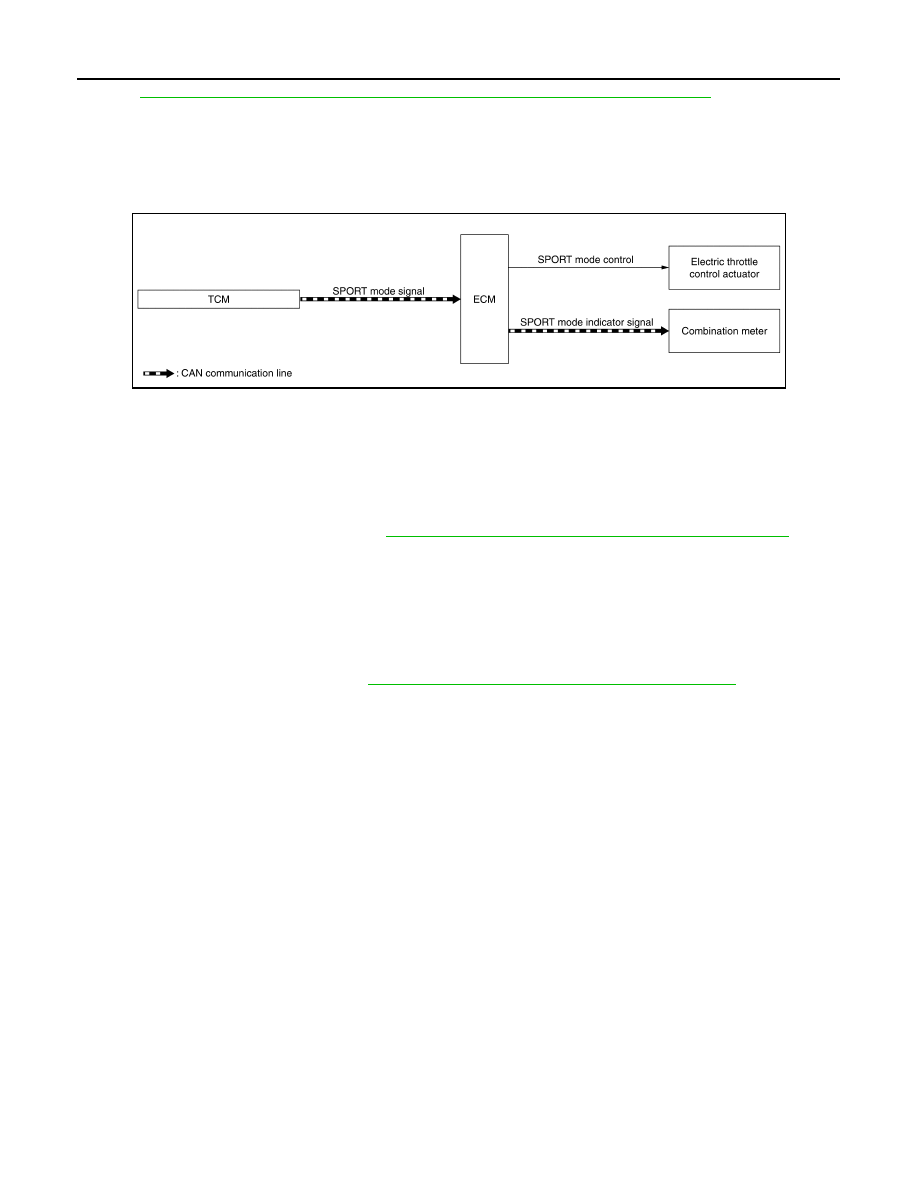Nissan Rogue. Manual - part 447

EC-56
< SYSTEM DESCRIPTION >
[QR25DE]
SYSTEM
Refer to
LAN-32, "CAN COMMUNICATION SYSTEM : CAN Communication Signal Chart"
munication for detail.
SPORT MODE CONTROL
SPORT MODE CONTROL : System Description
INFOID:0000000011277873
SYSTEM DIAGRAM
SYSTEM DESCRIPTION
• SPORT mode that keeps high engine revolution and provides direct feel and acceleration performance suit-
able for driving on winding road.
• ECM receives an SPORT mode signal from TCM via CAN communication and improves drivability by con-
trolling the throttle movement.
• ECM transmits an SPORT mode indicator lamp signal to the combination meter via CAN communication.
NOTE:
For the details of the SPORT mode, refer to
DMS-8, "SPORT MODE CONTROL : System Description"
.
ECO MODE CONTROL
ECO MODE CONTROL : System Description
INFOID:0000000011518220
SYSTEM DESCRIPTION
ECM receives an ECO mode signal from TCM via CAN communication and improves the fuel economy by
controlling the throttle movement to less than usual.
For details of ECO mode system, refer to
TM-43, "ECO MODE SYSTEM : System Description"
JSBIA3227GB